What things should you consider when buying a duvet?
Are you familiar with the dos and don’ts of duvets? Do you know how to choose a duvet? Even if you think you know your eiderdown from your synthetic down, we’ll cover what to consider when buying your next bedding in our duvet buying guide. So, firstly, you should always look at the TOG (to sleep like a log), secondly, the fill of the duvet, thirdly, the weight and lastly, the maintenance involved to care for it.

What is a duvet tog and how to choose the right one?
A duvet TOG rating is a measure of how well a duvet traps heat. TOG is an abbreviation of Thermal Overall Grade. The higher the TOG, the warmer the duvet will feel. They’re rated in numbers and range from 1 (the lowest) to 15 (the highest).
To choose the right duvet TOG, consider your climate, room temperature, and sleeping style. Hot sleepers and warm homes need lower TOGs, while cold sleepers or draughty rooms need higher TOGs.
| Tog Rating | Best For | Season/Climate |
|---|---|---|
| 1–4.5 | Hot sleepers | Summer / warm rooms |
| 7–10.5 | Average sleepers | Spring & Autumn (all-year use) |
| 12–15 | Cold sleepers | Winter / cold homes |
Which TOG is warm enough for Winter?
We’ll start our guide to duvet TOGs with the highest TOG rating of 12-15 TOG. This is most suitable for sleeping under in winter. If you like to have your heating on high over the colder months of the year, you might prefer a TOG of 7-10.5, which is also a good thickness for Spring or Autumn.
Do you need to change your duvet TOG in the Summer?
In the Summer, you can change to a lighter duvet to prevent overheating. With our duvet TOG guide, we advise somewhere between 1-4.5 TOG rating. The lowest rating of 1 is for those living in hot climates. If you live in the UK and you don’t have an air conditioning unit, 4.5 TOG is still a light TOG. The Bamboo Summer Duvet has a 4.5 TOG rating and comes with Snugglesnaps™ so you can attach our 10.5 Panda Cloud Bamboo Duvet to it, which transforms it into a winter duvet. A 10.5 TOG is ideal if you’re looking for one which is comfortable for all seasons.
What duvet TOG is best for kids?
Children are unable to regulate their temperature, so their duvets should be a lower TOG than an adult one, and a lighter cover will prevent them from getting too hot. If you're choosing a duvet for your little one, see below the age range with the suitable TOG range.
-
Under 12 months - no duvet, a baby sleeping bag or cellular blanket.
-
5- 10 years old - 4.5 TOG duvet.
-
10-18 years old, they can sleep under an adult duvet TOG rating of 7-10.5.
Our kids duvet has been specifically created for children. Filled with a combination of Nano-Microfibre™ and signature bamboo, results in a super soft, ultra-thin duvet which is naturally thermoregulating and moisture-wicking. At a TOG of 4.5, it's suitable for all seasons, making perfect bedding for your little one.

Is it better to have a natural duvet filling?
It’s what’s inside that counts when it comes to duvets. A natural duvet filling such as cotton, down, feather, silk or bamboo has many advantages for your sleep. Below are the benefits of a natural duvet fill:
-
For those who sleep hot, a natural duvet provides great air circulation.
-
Wool, silk and bamboo all contain temperature-regulation and moisture-wicking properties, so you’ll be at the best temperature for sleeping.
-
Natural duvets are lighter than synthetic duvets, yet still provide ample insulation to keep you warm.
-
If you’re an allergy sufferer, opt for a duvet filling made from wool, silk, or bamboo, as they’re naturally hypoallergenic, creating an environment inhospitable to dust, dirt, and allergens.
-
A natural duvet is an eco-friendly option, as it is sourced responsibly and is easier to recycle when it reaches the end of its life.
-
Lasts up to 15 years with proper care.
If you would like to discover more about the differences between a bamboo and feather down duvet, we go into more detail in our blog, Feather vs. Bamboo: Which duvet filling is right for you?
| Fill Type | Warmth | Weight | Allergy-Friendly | Eco Impact |
|---|---|---|---|---|
| Down/Feather | High | Medium | ❌ No | Low |
| Wool | High | Heavy | ✅ Yes | Medium |
| Bamboo | Medium | Light | ✅ Yes | High |
| Synthetic | Low–Med | Light | Sometimes | Low |
What are the benefits of a synthetic duvet?
Synthetic duvets are a budget-friendly option compared to natural duvets, which can be more expensive. Here are some other advantages of synthetic duvets over natural duvets:
-
Synthetic material duvets are cruelty-free as they don’t use a feather fill.
-
If you have allergies, a hollow fibre polyester or microfibre will not trigger them like feather or duck down.
-
Man-made duvets can be easier to clean, as they’re often machine washable.
Is duvet weight important when considering a duvet?
Yes, weight is an important consideration when finding your perfect duvet. Now let’s weigh up light and heavy duvets. Heavier duvets are often a higher TOG and therefore keep you snug in the winter; light duvets will promote more airflow. The other indication of a heavy duvet is the weight in grams.
-
Lightweight: 150–250 GSM
-
Medium weight: 300–400 GSM
-
Heavyweight: 450+ GSM
A duvet with 500 GSM will feel noticeably heavier than one with 250 GSM, even if they’re the same size. Some duvets can be high in TOG but light in weight, especially down duvets, which insulate well but are light. Heavy duvets feel denser and have more weight on the body.
You’ll find that heavy duvets, such as the 500 GSM Panda Cloud Bamboo Duvet, are good for your sleep for the following reasons:
-
Superior insulation for colder climates and winter months.
-
Snuggly comfort envelopes you with no cold spots.
-
Provide warmth without needing heating on.
-
Highly durable.
If you want to feel cosy but without the weight, a lighter duvet can still feel comfortable and warm. They are also a recommended choice because:
-
They’re breathable and prevent overheating for hot sleepers.
-
If you like to keep the heating on at night.
-
Easier to care for as they’re smaller than a heavy duvet.
-
Anti-allergy and less likely to trap moisture.
How do I choose the best duvet for the season?
Let’s give you the down low on bamboo as the best fabric for bedtime. As a duvet filling in the warmer months it provides maximum breathability and promotes airflow, with thermoregulation properties, it keeps you at the optimum temperature for sleeping in both Summer and Winter. Some key benefits of bamboo as an all-season duvet are:
-
Hypoallergenic, it’s ideal for hayfever and allergy sufferers.
-
Luxuriously soft and fluffy, it’s naturally antibacterial, so it keeps sleep clean and fresh.
-
You’ll remain dry and comfortable under a bamboo duvet as it’s moisture-wicking.
-
Bamboo is a wonder fabric- keeping you toasty warm in Winter and cool in Summer.
-
Luxuriously soft and fluffy, it keeps you warm and cosy all night.
-
Bamboo is a sustainably sourced organic plant, making it a planet-friendly purchase.
-
Durable - you bamboo duvet will last for years to come.
-
Easy to care for as it’s machine washable.
How do I care for my duvet?
A duvet purchase is an important one, after all you’ll be spending every night under it, and this means you need to take extra special care with it. Check your care label for the instructions on how to wash your duvet, but for a basic overview on how often to clean, check below:
-
Bamboo or wool duvet – every 6 to 12 months.
-
Down and feather options – 12-18 months.
-
Synthetic duvet – 6 months.
To keep your most duvet snuggly and soft for many bedtimes to come, find more tips and tricks in our blog post on ‘How To Wash Your Duvet to Keep It In Good Condition.’
So we’ve uncovered all the insider knowledge on how to choose your duvet based on TOG, weight and filling. Natural filling fibres such as bamboo or cotton are an ideal duvet choice as they are suitable for all-year-round comfort, regulating your temperature and keeping your sleep fresh and highly breathable. They’re also cruelty-free as they don’t use feathers for insulation. If you’re on a budget, synthetic duvets are an excellent choice and they’re easy to care for. Now relax and enjoy a duvet day.
FAQ
1. What is a duvet TOG rating?
A TOG rating measures how well a duvet traps warmth. Ratings range from 1 (lightest) to 15 (warmest), helping you choose the right duvet for your bedroom temperature.
2. Which TOG rating is best for winter?
For cold months, a 12–15 TOG duvet provides superior insulation. If you run your heating higher, a 7–10.5 TOG can also work well in winter.
3. What duvet TOG should I use in summer?
Opt for 1–4.5 TOG. A 1 TOG suits very warm climates, while 4.5 TOG is ideal for UK summers without air conditioning.
4. Natural vs. synthetic duvet filling—what’s the difference?
Natural fillings (bamboo, down, silk) offer breathable, hypoallergenic comfort and eco-friendly sourcing. Synthetic fills (microfibre, hollow fibre) are budget-friendly, cruelty-free, and easy to machine-wash.
5. How often should I care for my duvet?
Follow care labels, but as a rule: clean bamboo or wool duvets every 6–12 months, down/feather every 12–18 months, and synthetic duvets every 6 months.

![[MattressTopper] Panda London Memory Foam Bamboo Mattress Topper package box](http://pandalondon.com/cdn/shop/files/Bamboo_Mattress_Topper_Package_Box.webp?v=1742301823&width=1500)
![[MattressTopper] Panda London Memory Foam Bamboo Mattress Topper on the floor](http://pandalondon.com/cdn/shop/products/Panda-Memory-Foam-Bamboo-Mattress-Topper-Yoga-e1624045454555.jpg?v=1758795458&width=1000)
![[MattressTopper] Bamboo Mattress Topper Lifestyle Image with Memory Foam Pillows Product Page](http://pandalondon.com/cdn/shop/files/Bamboo_Mattress_Topper_Lifestyle_Image_with_Memory_Foam_Pillows_Product_Page.webp?v=1758795458&width=800)
![[MattressTopper] Bamboo Mattress Topper Lifestyle Image with Bamboo Pillows In the Garden room Product Page](http://pandalondon.com/cdn/shop/files/Bamboo_Mattress_Topper_Lifestyle_Image_with_Bamboo_Pillows_In_the_Garden_room_Product_Page.webp?v=1758795458&width=800)
![[MattressTopper] Panda London Memory Foam Bamboo Mattress Topper side](http://pandalondon.com/cdn/shop/files/Mattress_Topper_Isolated_-_resized.jpg?v=1758795458&width=800)
![[HybridMattressPro] Hybrid_Bamboo_Mattress_Pro_Product_Image_2026](http://pandalondon.com/cdn/shop/files/Hybrid_Bamboo_Mattress_Pro_Product_Image_2026.webp?v=1764944771&width=1000)
![[HybridMattressPro] Breathable Hybrid Bamboo Mattress](http://pandalondon.com/cdn/shop/products/Breathable-Hybrid-Bamboo-Mattress.jpg?v=1764944771&width=1920)
![[HybridMattressPro] Hybrid Bamboo Mattress Pro Cover Zip](http://pandalondon.com/cdn/shop/files/Hybrid_Bamboo_Mattress_Cover.jpg?v=1764944771&width=800)
![[HybridMattressPro] Panda Hybrid Bamboo Mattress Pro](http://pandalondon.com/cdn/shop/files/Hybrid_Bambo_Memory_Foam_Mattress_-_BioCell_Foam_x.jpg?v=1764944771&width=800)
![[HybridMattressPro] Couple on a Hybrid Bamboo Mattress Pro](http://pandalondon.com/cdn/shop/files/Hybrid_Bamboo_Mattress_Couple.jpg?v=1764944771&width=800)
![[CloudDuvet] Panda London The Cloud Bamboo Duvet Packaging](http://pandalondon.com/cdn/shop/products/Panda-London-The-Cloud-Bamboo-Duvet-Panda-Life-scaled_00a651ad-4ca3-4105-b520-12a94c1a4f71.jpg?v=1713363286&width=1920)
![[CloudDuvet] Panda London The Cloud Bamboo Duvet Rolled](http://pandalondon.com/cdn/shop/products/Duvet-Listing-Images03.jpg?v=1764079307&width=1000)
![[CloudDuvet] Panda London The Cloud Bamboo Duvet Girl Huggin a Duvet on the Bed](http://pandalondon.com/cdn/shop/files/Cloud_Bamboo_Duvet_-_Lady_Hugging_it_on_Bed_LifestyleImage.jpg?v=1764079307&width=1000)
![[CloudDuvet] Panda London The Cloud Bamboo Duvet Guy In the Air with Cloud Bamboo Duvet](http://pandalondon.com/cdn/shop/files/GuyonaHybridBambooMattresswithCloudDuvet.jpg?v=1764079307&width=2000)
![[CloudDuvet] Panda Cloud Duvet Winter on the bed lifestyle image](http://pandalondon.com/cdn/shop/files/Panda_Cloud_Duvet_Winter_on_the_Bed_Lifestyle-1_image.jpg?v=1764079307&width=1000)
![[BBWhite] White 100% Bamboo Bedding](http://pandalondon.com/cdn/shop/files/Pure_White_Full_Bed.webp?v=1719581797&width=1000)
![[BBWhite] White 100% Bamboo Bedding Texture](http://pandalondon.com/cdn/shop/files/100_Bamboo_Bedding_-_Pure_White_-_Close_Up_02.webp?v=1762879591&width=1000)
![[BBWhite] White 100% Bamboo Bedding Woman in bed sleeping](http://pandalondon.com/cdn/shop/files/100-Bamboo-Bedding-Set-Pure-White-BB.webp?v=1762879591&width=768)
![[BBWhite] White 100% Bamboo Bedding Woman Duvet cover buttons](http://pandalondon.com/cdn/shop/files/hand_and_buttons_1.webp?v=1762879591&width=1000)
![[BBWhite] White 100% Bamboo Bedding Woman in bed looking and smiling-](http://pandalondon.com/cdn/shop/files/SatonMadeBed-White100_BambooBedding-white_-_BB_SideShot1000x1000.webp?v=1762879591&width=980)
![[BBUrbanGrey] Urban Grey 100% Bamboo Bedding](http://pandalondon.com/cdn/shop/files/Made_Bed_-_Urban_Grey_-_Wide_Shot_2_1_1.webp?v=1762880019&width=1000)
![[BBUrbanGrey] Cloud Duvet Urban Grey 100% Bamboo Bedding Set](http://pandalondon.com/cdn/shop/files/Cloud_Duvet_-_Grey_-_Close_up_2.webp?v=1762880019&width=1000)
![[BBUrbanGrey] Urban Grey 100% Bamboo Bedding Set Woman sitting on the bed](http://pandalondon.com/cdn/shop/files/Sat_in_Bed_-_Grey_100__Bamboo_Bedding_-_Wide_Shot.webp?v=1762880019&width=1000)
![[BBUrbanGrey] Urban Grey 100% Bamboo Bedding Set Woman Duvet buttons Panda London](http://pandalondon.com/cdn/shop/files/hand_buttons_grey_bedding_1.webp?v=1762880019&width=1000)
![[BBUrbanGrey] Woman Sitting on the Bamboo Bedding with coffee](http://pandalondon.com/cdn/shop/files/SatonMadeBed-White100_BambooBedding-SideShot1000x1000.jpg?v=1762880019&width=1000)
![[BBNavyBlue] Deep Sea Navy Blue 100% Bamboo Bedding](http://pandalondon.com/cdn/shop/files/Made_Bed_-_Navy_-_Wide_Shot_3_copy.webp?v=1762879591&width=1000)
![[BBNavyBlue] Deep Sea Navy Blue 100% Bamboo Bedding Texture](http://pandalondon.com/cdn/shop/files/Cloud_Duvet_-_Navy_-_Close_up_2.webp?v=1762880019&width=1000)
![[BBNavyBlue] Deep Sea Navy Blue 100% Bamboo Bedding Woman Sitting on the bed](http://pandalondon.com/cdn/shop/files/Sat_Up_in_Bed_-_Navy_100__Bamboo_Bedding_-_Hands_on_Bed.webp?v=1762880019&width=1000)
![[BBNavyBlue] Deep Sea Navy Blue 100% Bamboo Bedding Duvet Cover Buttons](http://pandalondon.com/cdn/shop/files/Cloud_Duvet_Cover_Buttons_-_Deep_Sea_Navy.webp?v=1762880019&width=1000)
![[BBNavyBlue] Deep Sea Navy Blue 100% Bamboo Bedding Woman sitting on the bed looking away](http://pandalondon.com/cdn/shop/files/SatonMadeBed-White100_BambooBedding-SideShot1000x1000-001.webp?v=1762880019&width=980)
![[BBPink] Vintage Pink Blue 100% Bamboo Bedding](http://pandalondon.com/cdn/shop/files/Made_Bed_-_Pink_-_Wide_Shot_copy.webp?v=1762879591&width=1000)
![[BBPink] Vintage Pink Texture 100% Bamboo Bedding](http://pandalondon.com/cdn/shop/files/Cloud_Duvet_-_Pink_-_Close_up_2.webp?v=1762880019&width=1000)
![[BBPink] Vintage Pink Woman Sitting on the 100% Bamboo Bedding](http://pandalondon.com/cdn/shop/files/Sat_Up_in_Bed_-_Pink_-_Hands_on_Bed.webp?v=1762880019&width=1000)
![[BBPink] Vintage Pink Woman Sitting on the 100% Bamboo Bedding Duvet Cover](http://pandalondon.com/cdn/shop/files/Cloud_Duvet_Cover_Buttons_-_Vintage_Pink.webp?v=1762880019&width=1000)
![[BBPink] Vintage Pink Woman Sitting on the 100% Bamboo Bedding Woman looking far away](http://pandalondon.com/cdn/shop/files/SatonMadeBed-White100_BambooBedding-SideShot1000x1000-001_Vintage_Pink.webp?v=1762880019&width=980)
![[BBGrey] Light Grey 100% Bamboo Bedding](http://pandalondon.com/cdn/shop/files/Made_Bedding_in_Bedroom_-_Urban_Grey_-_Wide_Shot.webp?v=1762879591&width=1000)
![[BBGrey] Light Grey 100% Bamboo Bedding texture](http://pandalondon.com/cdn/shop/files/Texture17.webp?v=1762880019&width=1000)
![[BBGrey] Light Grey 100% Bamboo Bedding with Woman smiling](http://pandalondon.com/cdn/shop/files/Sat_Up_in_Bed_-_Grey_-_Hands_on_Bed.webp?v=1762880019&width=1000)
![[BBGrey] Light Grey 100% Bamboo Bedding with Duvet Cover buttons](http://pandalondon.com/cdn/shop/files/Cloud_Duvet_Cover_Buttons_-_Quiet_Grey.webp?v=1762880019&width=1000)
![[BBGrey] Light Grey 100% Bamboo Bedding with Woman smiling and sitting coffee](http://pandalondon.com/cdn/shop/files/SatonMadeBed-White100_BambooBedding-SideShot1000x1000-002-_Grey.webp?v=1762880019&width=980)
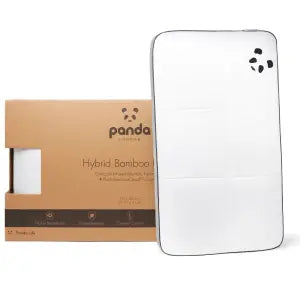 Hybrid Bamboo Pillow
Hybrid Bamboo Pillow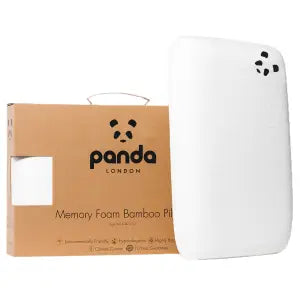 Memory Foam Bamboo Pillow
Memory Foam Bamboo Pillow Kids Memory Foam Bamboo Pillow
Kids Memory Foam Bamboo Pillow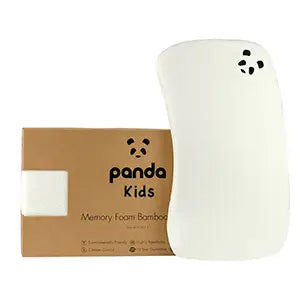 Baby Memory Foam Bamboo Pillow
Baby Memory Foam Bamboo Pillow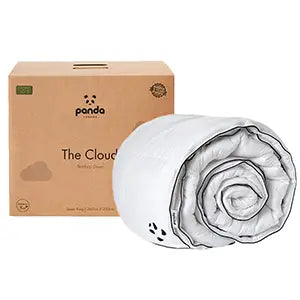 Panda Cloud Duvet
Panda Cloud Duvet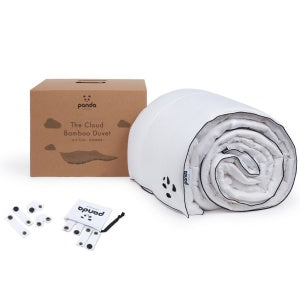 Bamboo Summer Duvet
Bamboo Summer Duvet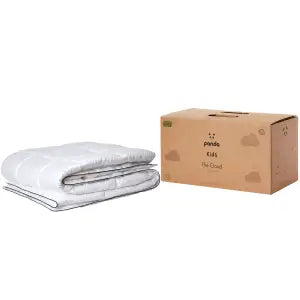 Kids Cloud Duvet
Kids Cloud Duvet

![[PureWhiteDC] White Duvet Cover 100% Bamboo Bedding buttons](http://pandalondon.com/cdn/shop/files/ButtonsDuvetCoverPureWhite.jpg?v=1714123697&width=2000)
![[PureWhiteDC] White Duvet Cover 100% Bamboo Bedding Package](http://pandalondon.com/cdn/shop/files/White_Duvet_Cover_Bamboo_Bedding_Package.webp?v=1721052312&width=1811)
![[PureWhiteDC] White Duvet Cover 100% Bamboo Bedding Stripes](http://pandalondon.com/cdn/shop/files/White_Duvet_Cover_Straps_100_Bamboo_Bedding.webp?v=1721052311&width=1000)
![[PureWhiteDC] White Duvet Cover 100% Bamboo Bedding Texture](http://pandalondon.com/cdn/shop/files/White_Duvet_Cover_100_Bamboo_Bedding_-_Pure_White_-_Duvet_Cover_Texture.webp?v=1721052312&width=1000)
![[PureWhiteDC] White Duvet Cover 100% Bamboo Bedding Woman buttons hands](http://pandalondon.com/cdn/shop/files/White_Duvet_Cover_-_Woman_hands_and_buttons.webp?v=1721052312&width=1000)
![[VintagePinkDC] Vintage Pink Duvet Cover 100% Bamboo Bedding buttons](http://pandalondon.com/cdn/shop/files/Vintage_Pink_Duvet_Cover_Bamboo_Bedding_Buttons.webp?v=1743769041&width=1000)
![[VintagePinkDC] Vintage Pink Duvet Cover 100% Bamboo Bedding package](http://pandalondon.com/cdn/shop/files/Vintage_Pink_Duvet_Cover_Package_Bamboo_Bedding.webp?v=1743769041&width=1811)
![[VintagePinkDC] Vintage Pink Duvet Cover 100% Bamboo Bedding Stripes](http://pandalondon.com/cdn/shop/files/Vintage_Pink_Duvet_Cover_Bamboo_Bedding_Stripes.jpg?v=1721052469&width=1000)
![[VintagePinkDC] Vintage Pink Duvet Cover 100% Bamboo Bedding Texture](http://pandalondon.com/cdn/shop/files/Vintage_Pink_Duvet_Cover_Bamboo_Bedding_Texture.webp?v=1743769041&width=1000)
![[VintagePinkDC] Vintage Pink Duvet Cover 100% Bamboo Bedding Woman In Bed Sitting](http://pandalondon.com/cdn/shop/files/Vintage_Pink_Duvet_Cover_Bamboo_Bedding_Woman_in_bed.webp?v=1721052470&width=1000)
![[NavyDC] Deep Sea Navy Duvet Cover 100% Bamboo Bedding Buttons](http://pandalondon.com/cdn/shop/files/Deep_Sea_Navy_Buttons_Duvet_Cover_Bamboo_Bedding.webp?v=1744115105&width=1000)
![[NavyDC] Deep Sea Navy Duvet Cover 100% Bamboo Bedding Package](http://pandalondon.com/cdn/shop/files/Deep_Sea_Navy_Package_Duvet_Cover_Bamboo_Bedding.webp?v=1744115105&width=1811)
![[NavyDC] Deep Sea Navy Duvet Cover 100% Bamboo Bedding Stripes](http://pandalondon.com/cdn/shop/files/Deep_Sea_Navy_Stripes_Duvet_Cover_Bamboo_Bedding.webp?v=1721053122&width=1000)
![[NavyDC] Deep Sea Navy Duvet Cover 100% Bamboo Bedding Texture](http://pandalondon.com/cdn/shop/files/Deep_Sea_Navy_Texture_Duvet_Cover_Bamboo_Bedding.webp?v=1744115105&width=1000)
![[NavyDC] Deep Sea Navy Duvet Cover 100% Bamboo Bedding Woman in bed sitting](http://pandalondon.com/cdn/shop/files/Deep_Sea_Navy_Woman_in_bed_Duvet_Cover_Bamboo_Bedding.webp?v=1721053123&width=1000)
![[GreyDC] Quiet Grey Duvet Cover 100% Bamboo Bedding Buttons](http://pandalondon.com/cdn/shop/files/Quiet_Grey_Cloud_Duvet_Cover_Bamboo_Bedding_Buttons.webp?v=1721053361&width=1000)
![[GreyDC] Quiet Grey Duvet Cover 100% Bamboo Bedding Package](http://pandalondon.com/cdn/shop/files/Quiet_Grey_Package_Duvet_Cover_Bamboo_Bedding_Buttons.webp?v=1721053360&width=1811)
![[GreyDC] Quiet Grey Duvet Cover 100% Bamboo Bedding Stripes](http://pandalondon.com/cdn/shop/files/Quiet_Grey_Stripes_Duvet_Cover_Bamboo_Bedding_Buttons.webp?v=1721053360&width=1000)
![[GreyDC] Quiet Grey Duvet Cover 100% Bamboo Bedding Texture](http://pandalondon.com/cdn/shop/files/Quiet_Grey_Texture_Duvet_Cover_Bamboo_Bedding_Buttons.webp?v=1721053361&width=1000)
![[GreyDC] Quiet Grey Duvet Cover 100% Bamboo Bedding Woman sitting in bed smiling](http://pandalondon.com/cdn/shop/files/Quiet_Grey_woman_in_bed_Duvet_Cover_Bamboo_Bedding_Buttons.webp?v=1721053361&width=1000)
![[UrbanGreyDC] Urban Grey Duvet Cover 100% Bamboo Bedding Buttons Woman hand](http://pandalondon.com/cdn/shop/files/Urban_Grey_Duvet_Grey_Bamboo_Bedding_buttons.webp?v=1721053513&width=1000)
![[UrbanGreyDC] Urban Grey Duvet Cover 100% Bamboo Bedding Buttons Package](http://pandalondon.com/cdn/shop/files/Duvet_Cover_Urban_Grey_Package_Bamboo_Bedding.webp?v=1721053512&width=1811)
![[UrbanGreyDC] Urban Grey Duvet Cover 100% Bamboo Bedding Stripes](http://pandalondon.com/cdn/shop/files/Urban_Grey_Duvet_Grey_Bamboo_Bedding_Stripes.webp?v=1721053512&width=1000)
![[UrbanGreyDC] Urban Grey Duvet Cover 100% Bamboo Bedding Buttons Texture](http://pandalondon.com/cdn/shop/files/Urban_Grey_Duvet_Grey_Bamboo_Bedding_Texture.webp?v=1721053513&width=1000)
![[UrbanGreyDC] Urban Grey Duvet Cover 100% Bamboo Bedding Buttons Woman sitting in bed smiling](http://pandalondon.com/cdn/shop/files/Urban_Grey_Duvet_Grey_Bamboo_Bedding_Woman_in_bed.webp?v=1721053513&width=1000)
![[KidsDuvet] Kids Cloud Duvet product image](http://pandalondon.com/cdn/shop/products/Panda-London_Kids_Duvet-scaled.jpg?v=1713363289&width=1920)
![[KidsDuvet] Kids Cloud Duvet on a cotbed](http://pandalondon.com/cdn/shop/files/Kids-KidsCloudDuvet.jpg?v=1750342405&width=2000)
![[KidsDuvet] Kids Cloud Bamboo Duvet Folded](http://pandalondon.com/cdn/shop/files/Kids_Cloud_Bamboo_Duvet_-_Folded_-_Logo_Shown_-_White_Background_Kids_Duvet.jpg?v=1750342405&width=1000)
![[KidsDuvet] Kids_CloudBambooDuvet-CornerLip-WhiteBackground](http://pandalondon.com/cdn/shop/files/Kids_CloudBambooDuvet-CornerLip-WhiteBackground.jpg?v=1750342405&width=2000)
![[KidsDuvet] Kids_Cloud_Bamboo_Duvet_-_Padded_-_Close_Up_Shot_Kids](http://pandalondon.com/cdn/shop/files/Kids_Cloud_Bamboo_Duvet_-_Padded_-_Close_Up_Shot_Kids.jpg?v=1750342405&width=1000)
![[KidsDuvet] Kids_CloudBambooDuvetRolled-WhiteBackground_1](http://pandalondon.com/cdn/shop/files/Kids_CloudBambooDuvetRolled-WhiteBackground_1.jpg?crop=region&crop_height=1697&crop_left=151&crop_top=0&crop_width=1697&v=1750342405&width=2000)
![[KidsDuvetUKSingle] UK_Single_kids_-_Summer_Cloud_Duvet_Main_Image](http://pandalondon.com/cdn/shop/files/UK_Single_kids_-_Summer_Cloud_Duvet_Main_Image.webp?v=1750342648&width=1000)
![[KidsDuvetUKSingle] UK_Single_Kids-Image_Summer_Bamboo_Duvet_Lifestyle_image-1](http://pandalondon.com/cdn/shop/files/UK_Single_Kids-Image_Summer_Bamboo_Duvet_Lifestyle_image-1.webp?v=1750342794&width=1000)
![[KidsDuvetUKSingle]UK_Single_Summer_Duvet_-_Duvet_Folded_Isolated-webp](http://pandalondon.com/cdn/shop/files/UK_Single_Summer_Duvet_-_Duvet_Folded_Isolated-webp.webp?v=1750342794&width=1000)
![[KidsDuvetUKSingle] UK_Single_Summer_Duvet_-_Snuggle_Snaps_Bag_02-webp](http://pandalondon.com/cdn/shop/files/UK_Single_Summer_Duvet_-_Snuggle_Snaps_Bag_02-webp.webp?v=1750343051&width=1000)
![[KidsDuvetUKSingle] UK_Single_Kids_-_Summer_Cloud_Snuggle_Snaps_Image_Webp](http://pandalondon.com/cdn/shop/files/UK_Single_Kids_-_Summer_Cloud_Snuggle_Snaps_Image_Webp.webp?v=1764079307&width=1500)
![[KidsDuvetAllSeason] Kids Duvet UK Single 10.5 tog rating all season one](http://pandalondon.com/cdn/shop/files/Kids_All_Seasn_10.5_Tog_Panda_Cloud_Duvet_Main_Image.jpg?v=1750685858&width=1920)
![[KidsDuvetAllSeason] Texture Duvet Cloud Panda](http://pandalondon.com/cdn/shop/files/Kids_All_Season_Panda_Cloud_Bamboo_Duvet_-_Padded_-_Close_Up_Shot.jpg?crop=region&crop_height=1900&crop_left=169&crop_top=0&crop_width=1900&v=1750686755&width=2239)
![[KidsDuvetAllSeason] Rolled Duvet All Season 10.5 tog](http://pandalondon.com/cdn/shop/files/Kids_All_Season_Duvet_Image_002_Panda_Cloud_Duvet.jpg?v=1750686755&width=1000)
![[KidsDuvetAllSeason] Panda Cloud Duvet Corner](http://pandalondon.com/cdn/shop/files/Kids_All_Season_Panda_Cloud_Cloud_Bamboo_Duvet_-_Corner_Lip_-_White_Background.jpg?v=1750686755&width=4848)
![[KidsDuvetAllSeason] All season Panda Cloud Duvet](http://pandalondon.com/cdn/shop/files/Kids_All_Season_Duvet_UK_Single_Kids-Image_Summer_Bamboo_Duvet_Lifestyle_image-1_webp.jpg?v=1750686755&width=1000)
![[SummerDuvet] Main Image for SUmmer Cloud Duvet Packagewith SnuggleSnaps](http://pandalondon.com/cdn/shop/files/Summer_Cloud_Duvet_Main_Image.jpg?v=1748002616&width=1000)
![[SummerDuvet] Rolled Summer Cloud Duvet Product](http://pandalondon.com/cdn/shop/files/002SecondImageSummerCloudDuvetRolled-1.jpg?v=1748002616&width=1000)
![[SummerDuvet] Girl laying on a Hybrid Bamboo Mattress with Summer Cloud Duvet](http://pandalondon.com/cdn/shop/files/003ImageSummerCloudDuvetWomanwithDuvetonaHybridBamboomattresswithHybridBambooPillows-1.jpg?v=1748002616&width=1000)
![[SummerDuvet] Summer Cloud Duvet on a bed](http://pandalondon.com/cdn/shop/files/004-Image_Summer_Bamboo_Duvet_Lifestyle_image-1.jpg?v=1748002616&width=1000)
![[SummerDuvet] SnuggleSnaps](http://pandalondon.com/cdn/shop/files/Summer_Cloud_Snuggle_Snaps_Image_Webp.webp?v=1748002616&width=1500)
